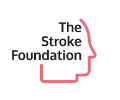Rehabilitation of upper limbs can look very different for many people. However, constraint-induced movement therapy (or CIMT) is frequently used as a therapy to re-learn to use the affected limb.
Constraint-induced movement therapy basically means limiting the use of the less affected limb in order to force the brain and more affected limb to work together. After a stroke, survivors who lose function (either partially or totally) of an upper limb immediately learn how to use the less affected limb to do everything. Brushing your teeth, grabbing a cup, opening doors, etc. CIMT is based on the “learned non-use” theory:
“Learned non-use develops during the early stages following a stroke as the patient begins to compensate for difficulty using the impaired limb by increased reliance on the intact limb. This compensation has been shown to hinder recovery of function in the impaired limb.”
In general, CIMT therapy consists of restricting the use of the more functional arm for up to 90% of the day – this is considered an intensive therapy. Some patients do see great benefit in implementing a modified version of CIMT during physical or occupational rehabilitation exercises.
Be sure to speak with your doctor, physical therapist or occupational therapist to ensure you are doing what is best for your recovery and rehabilitation process.




